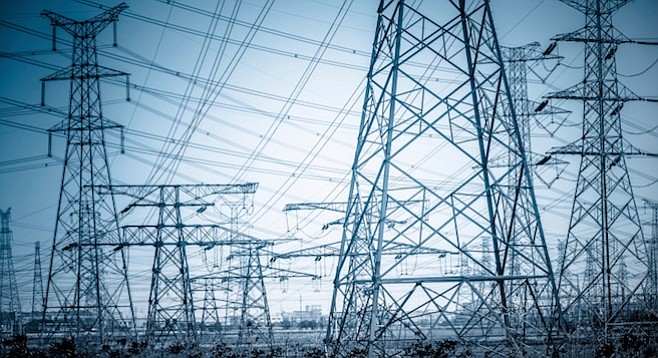 Facebook
Facebook
 X
X
 Instagram
Instagram
 TikTok
TikTok
 Youtube
Youtube

New numbers from the California Energy Commission indicate that, even excluding the effects of severe drought that have diminished the availability of hydroelectric power and the shutdown of the San Onofre Nuclear Generating Station, state residents have increased their reliance on natural-gas power plants.
Electricity generation from hydroelectric plants is down over 50 percent from 2010, from 31.7 million megawatt hours to just 14.7 million recently. In the 1950s, water coursing through the state's dams provided more than half of California's power, a figure that's shrunk to less than 20 percent as the population continues to expand.
"The current drought is as severe as the 1976-77 drought or the six-year-long dry period of 1987-92 when it comes to hydroelectric production," says a commission report. "However, the state's greater diversity of electricity supply developed since 1976-77 allows for greater flexibility in providing electricity to meet demand."
Meanwhile, the emergency shutdown of San Onofre that became permanent last year took another 2200 megawatt-hours of energy off the grid. While the expansion of alternative energy sources locally continues to outpace the nation as a whole, fossil fuels are likely to make up a considerable portion of energy supply in the short run.
The commission anticipates that, even though drought conditions statewide are expected to continue, increased reliance on other renewable energy sources such as solar and wind power will lessen reliance on gas power in 2015.


New numbers from the California Energy Commission indicate that, even excluding the effects of severe drought that have diminished the availability of hydroelectric power and the shutdown of the San Onofre Nuclear Generating Station, state residents have increased their reliance on natural-gas power plants.
Electricity generation from hydroelectric plants is down over 50 percent from 2010, from 31.7 million megawatt hours to just 14.7 million recently. In the 1950s, water coursing through the state's dams provided more than half of California's power, a figure that's shrunk to less than 20 percent as the population continues to expand.
"The current drought is as severe as the 1976-77 drought or the six-year-long dry period of 1987-92 when it comes to hydroelectric production," says a commission report. "However, the state's greater diversity of electricity supply developed since 1976-77 allows for greater flexibility in providing electricity to meet demand."
Meanwhile, the emergency shutdown of San Onofre that became permanent last year took another 2200 megawatt-hours of energy off the grid. While the expansion of alternative energy sources locally continues to outpace the nation as a whole, fossil fuels are likely to make up a considerable portion of energy supply in the short run.
The commission anticipates that, even though drought conditions statewide are expected to continue, increased reliance on other renewable energy sources such as solar and wind power will lessen reliance on gas power in 2015.
Comments